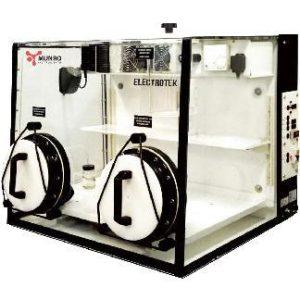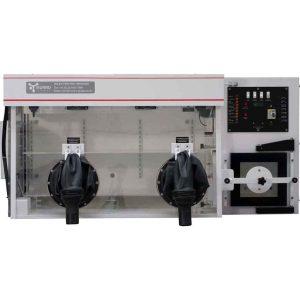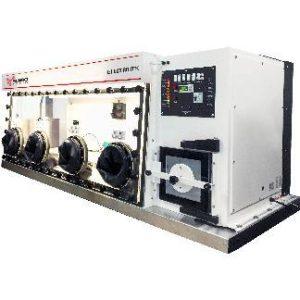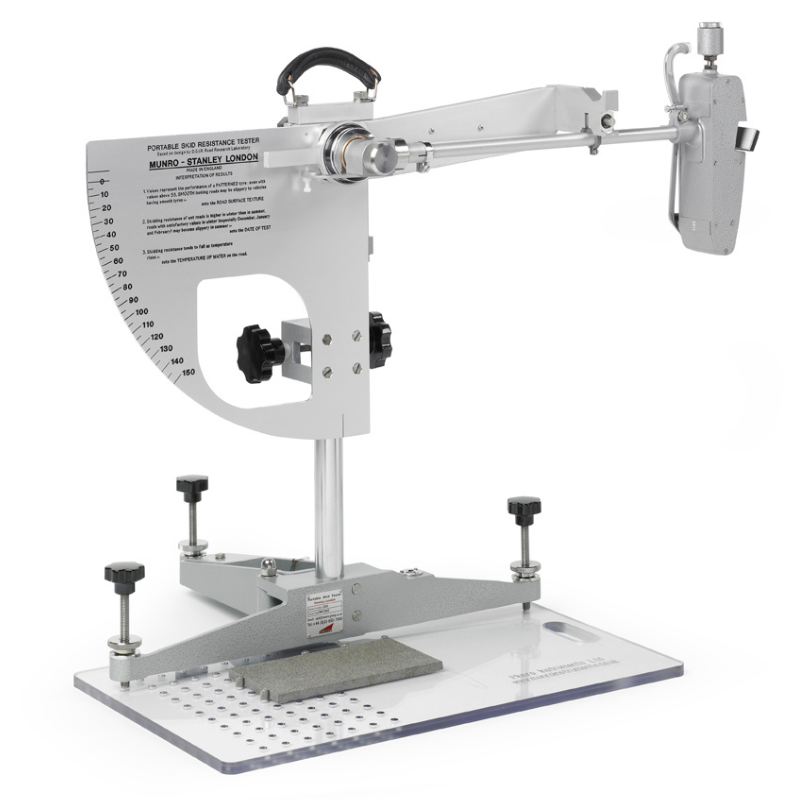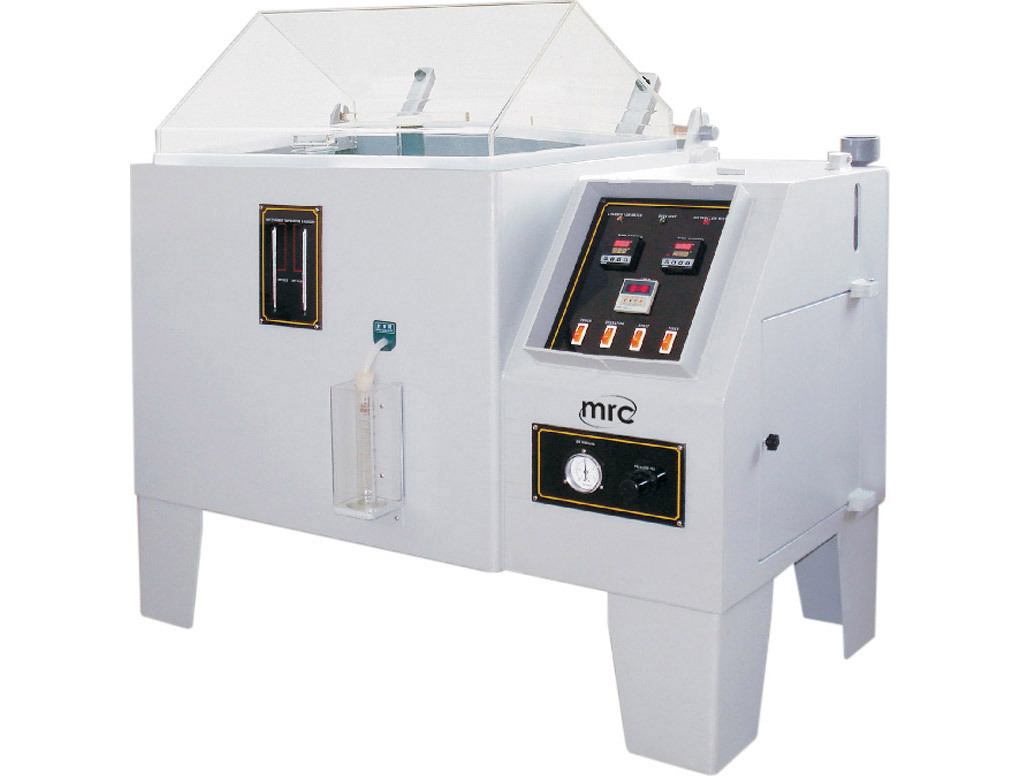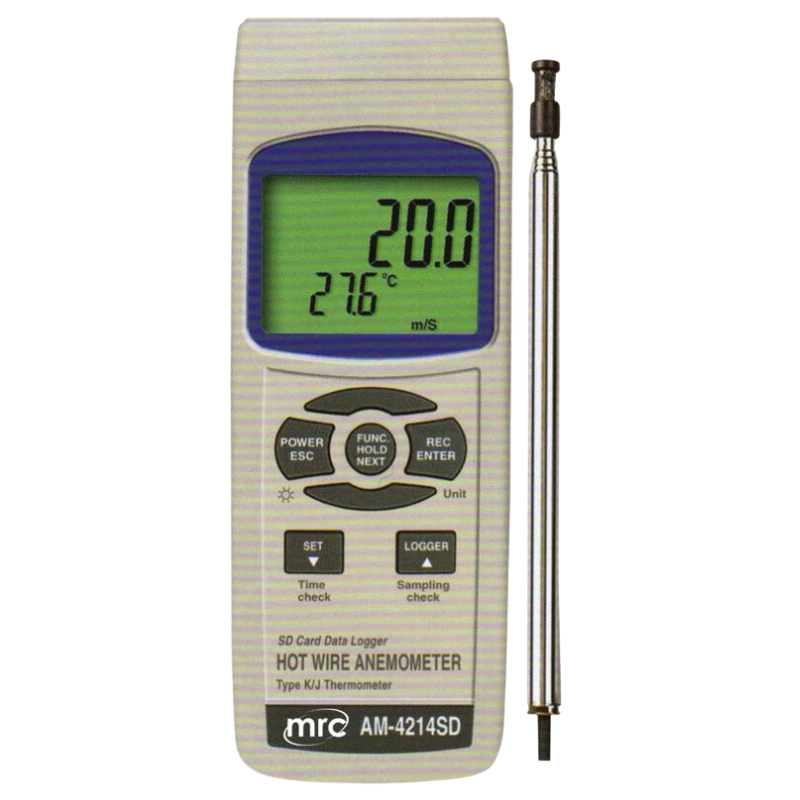MUNRO is a leading manufacturer of anaerobic chambers in the UK and worldwide.
What are Anaerobic Chambers?
An anaerobic chamber is a sealed, airtight environment that is specifically designed to exclude oxygen. It is used to study the effects of anaerobic conditions on various biological processes, such as the growth and metabolism of microorganisms, and the respiration of tissues and cells. Some anaerobic chambers are equipped with gas control systems that allow the user to adjust the levels of oxygen and other gases to simulate different anaerobic environments. These chambers are used in a variety of research and industrial settings, including microbiology labs, biotechnology companies, and environmental science facilities.
What is an Anaerobic Chamber used for?
An anaerobic chamber is used for a variety of research and industrial purposes, including the study of anaerobic microorganisms, the cultivation of anaerobic cells and tissues, and the testing of products that are sensitive to oxygen. Some specific uses of anaerobic chambers include:
- Studying the growth and metabolism of anaerobic microorganisms: Anaerobic microorganisms are those that can grow and survive in the absence of oxygen. By cultivating these microorganisms in an anaerobic chamber, researchers can study their biology and understand how they survive and thrive in environments with low or no oxygen.
- Cultivating anaerobic cells and tissues: Some cells and tissues, such as those found in the human gut, require anaerobic conditions to grow and function properly. By cultivating these cells and tissues in an anaerobic chamber, researchers can study their biology and understand how they contribute to human health.
- Testing products that are sensitive to oxygen: Many products, such as pharmaceuticals, food, and industrial chemicals, can be sensitive to oxygen and may degrade or spoil when exposed to air. By testing these products in an anaerobic chamber, researchers can determine how they are affected by oxygen and identify ways to improve their stability.
- Studying the respiration of cells and tissues: The respiration of cells and tissues, or the way they produce energy, can be affected by the presence or absence of oxygen. By studying the respiration of cells and tissues in an anaerobic chamber, researchers can understand how different levels of oxygen influence their metabolism and energy production.
One use of an anaerobic chamber in infection research is to study the growth and behavior of anaerobic bacteria, which are bacteria that can survive and thrive in the absence of oxygen. These bacteria are found in a variety of environments, including soil, water, and the human body, and they can cause infections in humans. By studying anaerobic bacteria in an anaerobic chamber, researchers can learn more about how these bacteria cause infections and how to treat them.
Anaerobic chambers are also used in immunity research to study the role of oxygen in the immune response. For example, researchers may use an anaerobic chamber to study the effects of low oxygen levels on the production and function of immune cells.
In inflammation research, anaerobic chambers may be used to study the role of oxygen in the inflammatory response. Inflammation is a complex process that involves the activation of immune cells and the release of inflammation-promoting molecules. By studying the effects of low oxygen levels on inflammation, researchers can gain a better understanding of the mechanisms involved in this process and how to modulate it.
In the field of epidemiology, anaerobic chambers may be used to study the transmission and spread of infectious diseases, particularly those caused by anaerobic bacteria. By simulating the conditions in which these bacteria thrive, researchers can better understand how they are transmitted and how to prevent their spread.
Overall, anaerobic chambers are useful tools for researchers studying various aspects of infection, immunity, and inflammation, as they allow for the controlled manipulation of oxygen levels in order to study the effects on these processes.
Application of Anaerobic Chambers
Anaerobic chambers are used in a variety of research and industrial applications, including:
- Microbiology: Anaerobic chambers are used in microbiology labs to study the growth and metabolism of anaerobic microorganisms, such as bacteria, fungi, and protozoa. By understanding the biology of these microorganisms, researchers can identify ways to control and prevent their growth in a variety of settings, including hospitals, food processing plants, and the environment.
- Biotechnology: Anaerobic chambers are used in biotechnology companies to cultivate anaerobic cells and tissues, such as those found in the human gut, for use in research and the development of new therapies.
- Environmental science: Anaerobic chambers are used in environmental science labs to study the role of anaerobic microorganisms in the environment, such as their role in the decomposition of organic matter and the cycling of nutrients.
- Industrial testing: Anaerobic chambers are used by a variety of industries to test products that are sensitive to oxygen, including pharmaceuticals, food, and industrial chemicals. By understanding how these products are affected by oxygen, companies can improve their stability and storage conditions.
- Medical research: Anaerobic chambers are used in medical research to study the respiration of cells and tissues, such as those found in the human lung and blood vessels. By understanding how different levels of oxygen influence their metabolism and energy production, researchers can identify ways to improve human health.
Why is it called Anaerobic?
Anaerobic refers to the absence of oxygen. In the context of an anaerobic chamber, it refers to the fact that the chamber is sealed and airtight, and is specifically designed to exclude oxygen. The term “anaerobic” comes from the Greek “an-” meaning “without” and “aer” meaning “air.” So, an anaerobic chamber is a chamber that is without air, or specifically designed to exclude oxygen.
What are the advantages of Anaerobic Chambers?
There are several advantages to using an anaerobic chamber:
- Controlled environment: Anaerobic chambers provide a controlled environment in which researchers can study the effects of anaerobic conditions on various biological processes. This allows researchers to isolate and study specific variables and understand how they influence the system under investigation.
- Ability to simulate different anaerobic environments: Some anaerobic chambers are equipped with gas control systems that allow researchers to adjust the levels of oxygen and other gases to simulate different anaerobic environments. This allows researchers to study the effects of different anaerobic conditions on various biological processes.
- Protection from oxygen: Anaerobic chambers protect sensitive samples from oxygen, which can help preserve the integrity of the sample and improve the accuracy of the results.
- Versatility: Anaerobic chambers can be used in a variety of research and industrial settings, including microbiology labs, biotechnology companies, and environmental science facilities.
- Safety: Anaerobic chambers provide a safe environment for researchers to work with potentially dangerous anaerobic microorganisms, as they are sealed and airtight and prevent the escape of these microorganisms into the environment.
What is the oxygen level in an Anaerobic Chamber?
The oxygen level in an anaerobic chamber is typically kept at a very low level, usually less than 1%. Some anaerobic chambers are equipped with gas control systems that allow the user to adjust the oxygen level to simulate different anaerobic environments. For example, a researcher may set the oxygen level to 0.5% to study the effects of a low-oxygen environment on a particular biological process. Other anaerobic chambers may be designed to maintain an oxygen level of 0% (i.e., a completely anaerobic environment) to study the effects of a completely oxygen-free environment.
What is the difference between anaerobic chambers and laboratory glove boxes
Anaerobic chambers and laboratory glove boxes are both sealed, airtight environments that are designed to exclude oxygen. However, there are several key differences between the two:
- Size: Anaerobic chambers are typically larger than laboratory glove boxes and are designed to accommodate a wide range of research and industrial activities. In contrast, glove boxes are smaller and are typically used for more specialized tasks, such as handling hazardous materials or performing experiments that require aseptic conditions.
- Gas control: Some anaerobic chambers are equipped with gas control systems that allow the user to adjust the levels of oxygen and other gases to simulate different anaerobic environments. In contrast, glove boxes are typically not equipped with gas control systems and maintain a fixed oxygen level, which is usually around 20%.
- Access: Anaerobic chambers are typically accessed through a door or hatch, while glove boxes are accessed through gloves that are built into the sides of the box. This allows users to manipulate materials inside the glove box without exposing them to the outside environment.
- Use: Anaerobic chambers are used for a wide range of research and industrial purposes, including the study of anaerobic microorganisms, the cultivation of anaerobic cells and tissues, and the testing of products that are sensitive to oxygen. Glove boxes, on the other hand, are used for more specialized tasks, such as handling hazardous materials or performing experiments that require aseptic conditions.
Anaerobic chambers in UK
In the UK, anaerobic chambers may be found at universities, research institutes, biotechnology companies, and environmental science facilities. They may also be used in hospitals and other healthcare settings to study the respiration of cells and tissues and identify ways to improve human health.
[contact-form-7 id=”266″ title=”Contact Form”]

